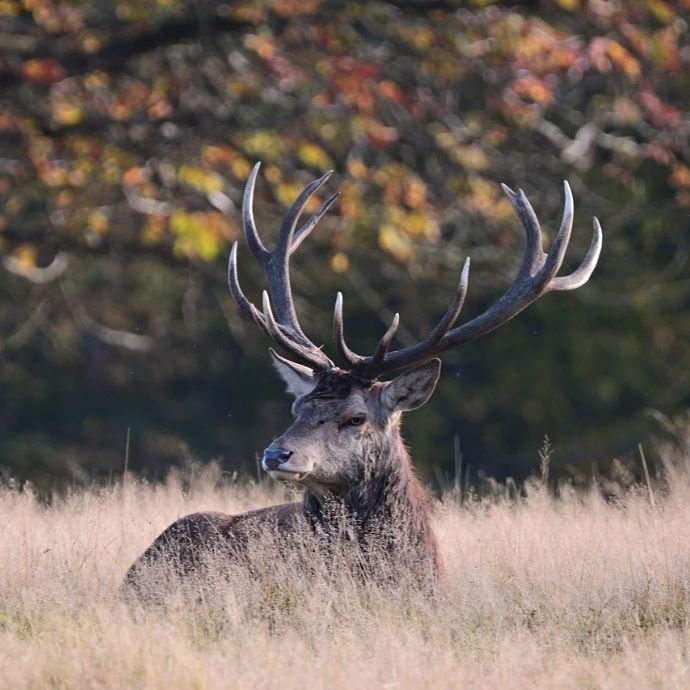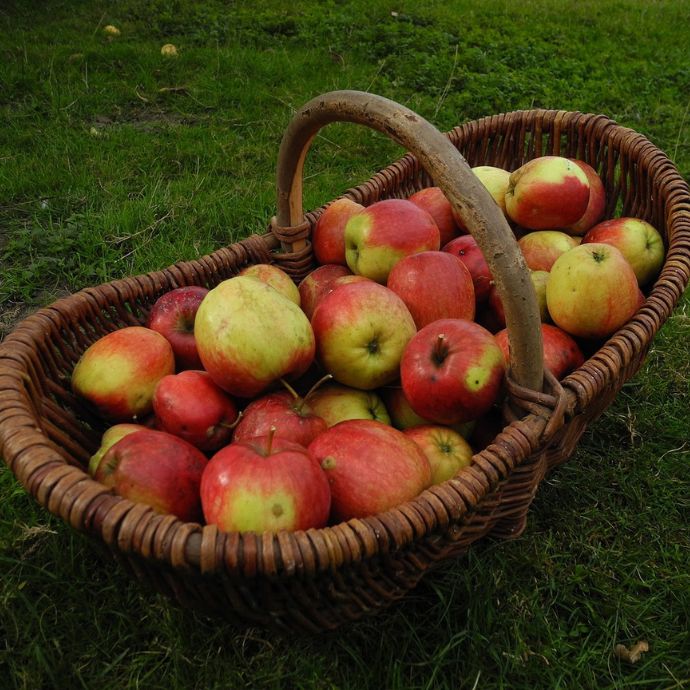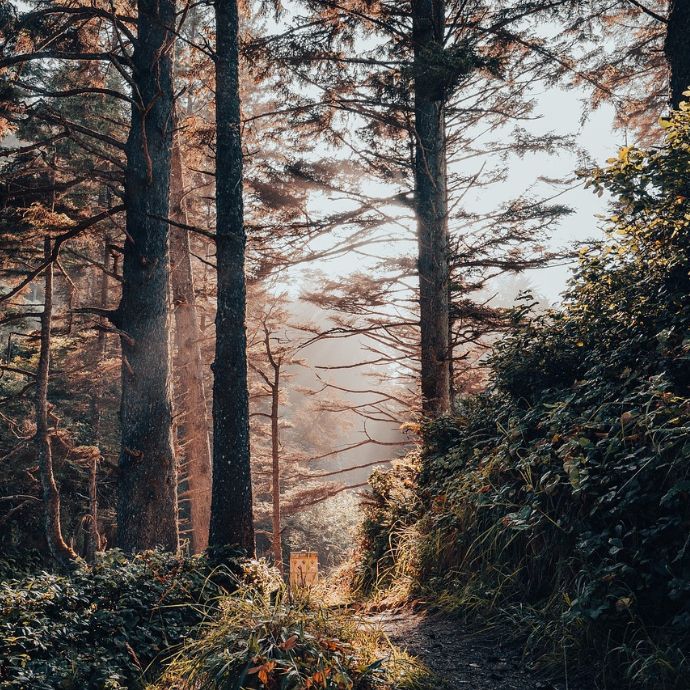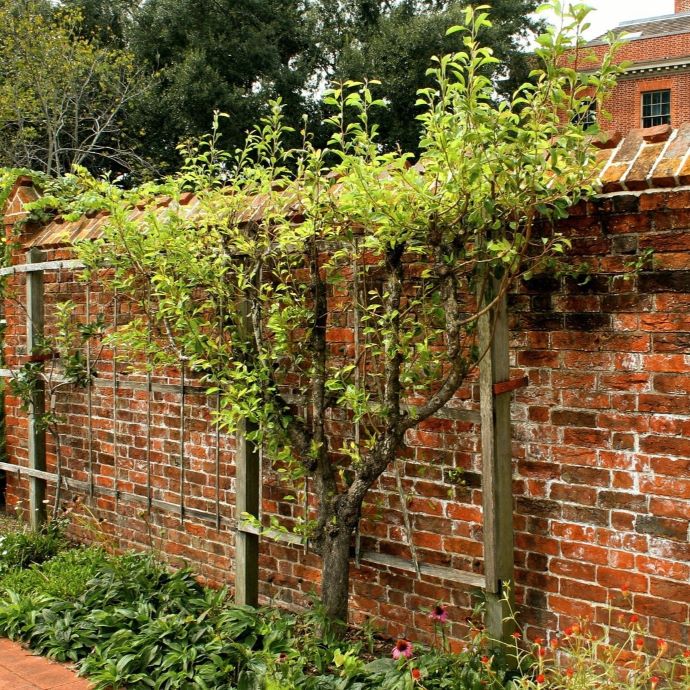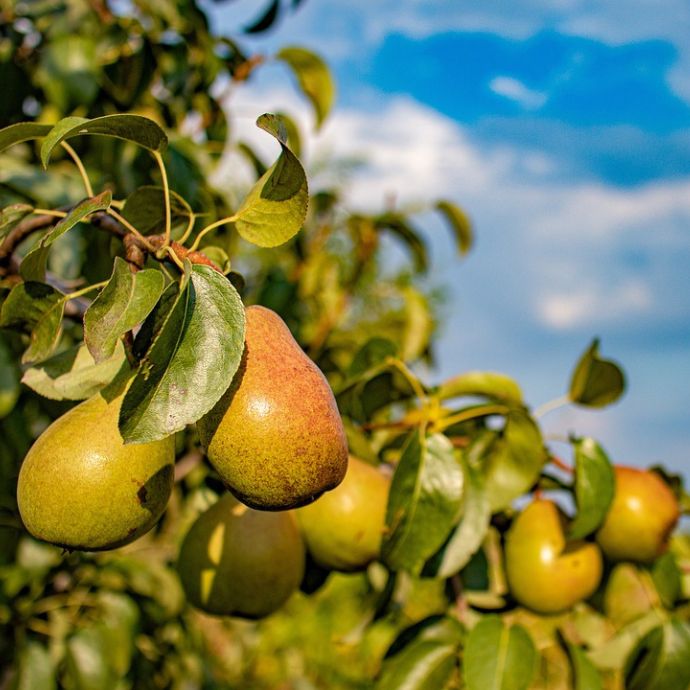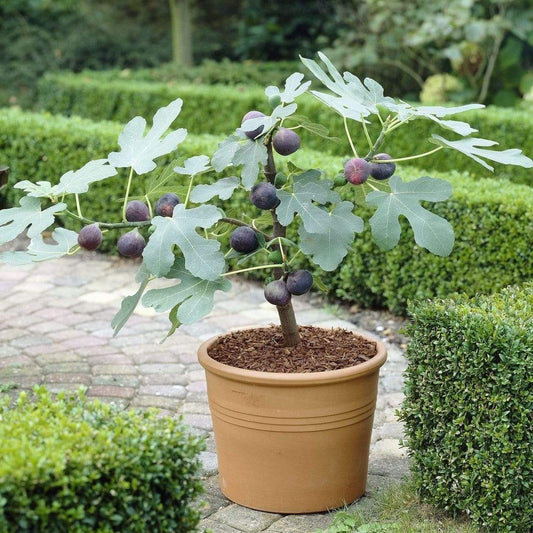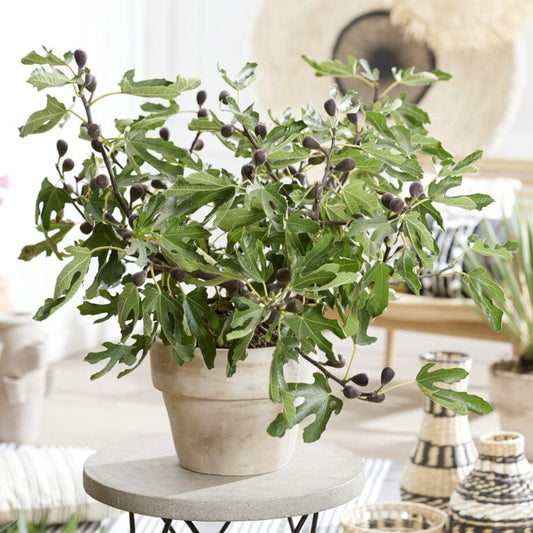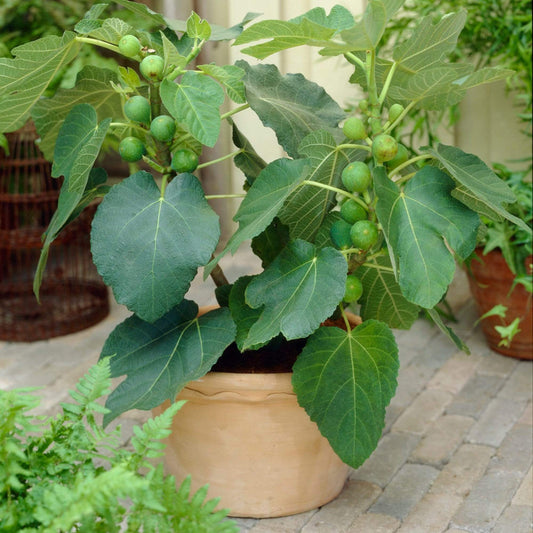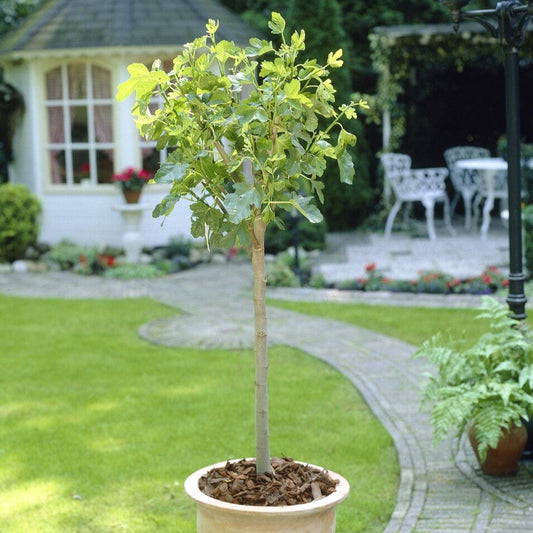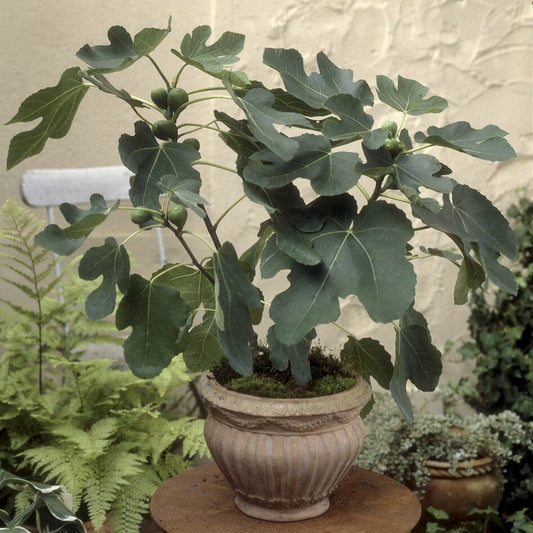Growing Figs: A Beginner’s Guide
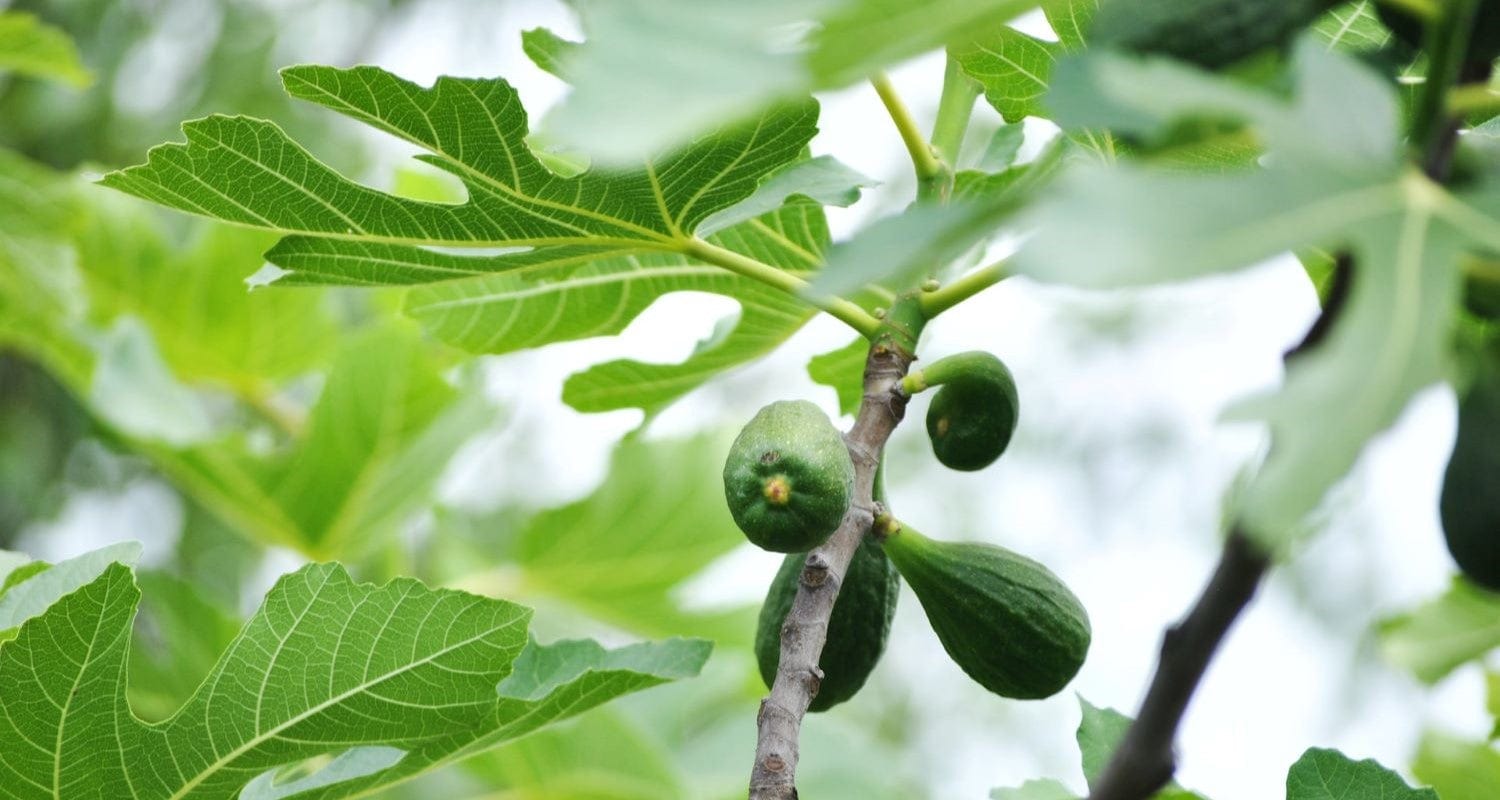
Who’d have thought that figs would be one of the easiest fruit trees to grow in the UK? They’re undemanding, hardy and productive, and as they grow best in pots, a fig is the ideal patio tree.
When they’re this good and this straightforward to grow, what could be better than growing your own fig tree? Growing it like a pro, that’s what. We asked our expert growers how they win at growing figs, and the results are in: follow these easy steps and you’ll soon be picking your own juicy, ripe fruit fresh from your garden.
Jump to:
- Where to plant
- How to plant
- Growing in pots
- Watering
- Feeding
- Protecting your fruit
- Pruning
- Training
- Taking cuttings
- Growing from seed
- Harvesting figs
- Storing figs
- Easiest fig trees to grow
Where should you plant your fig tree?
Restricting your plant's roots
Fig trees grow best (and produce more fruit) when their roots are restricted. This means that the best way to grow them is in large pots. Position them against a sunny south- or east-facing wall in a warm, sheltered area.
If you’d rather grow your fig tree in the ground, you will need to bury rubble or paving slabs around the tree to get the same effect. (Or just sink the pot into a hole in the ground).
Planting position
Your fig tree will also be happy in a conservatory or greenhouse, as long as it gets plenty of light and warmth. A position in full sun is best for your fig tree, although most varieties will cope with a little light shade in the afternoon.
Soil type
The best soil for fig trees is loamy, well-draining and fertile; this describes most ordinary garden soils, but if yours is on the heavy or sandy side, you can enrich it by digging in plenty of compost.
How to plant a fig tree
To plant a fig tree in the ground, follow these steps.
- Dig a hole about 60cm deep and wide - fig trees have deep roots! If you’re planting near a wall or fence, leave at least 20cm space between this and the hole.
- To keep the roots restricted, line the sides of the hole with old paving slabs or stones - they should come to about 2.5cm above the soil level.
- Add a layer of rubble or stones at the bottom of the hole (10-20cm deep is enough), then cover it with twice the depth of compost.
- Take your fig tree out of its nursery pot or ecowrap, then spread out its roots and position it in the centre of the hole.
- Fill in the hole with soil, firm down well and give your tree plenty of water.
If you’re planting more than one fig tree in the ground, leave about 5m between them for spreading and optimum airflow.
Growing fig trees in pots
If you’re planting your tree in a pot, choose a large, deep one (at least 30cm deep and wide).
- Put a layer of broken crockery or gravel in the bottom of the pot for drainage.
- Add compost to fill a third to a half of the pot.
- Take your fig tree out of its nursery pot or ecowrap and loosen the roots if needed. Position it in the middle of the pot.
- Fill in with more compost and firm down well around the tree. Leave about 2.5cm of space between the top of the pot and the compost, to allow for watering.
Trees in pots will need more regular watering and feeding than those in the ground, and will also benefit from a fresh layer of mulch at the top of the pot every year. Aim to re-pot your tree every two to three years into a larger container. Signs that your tree is outgrowing its pot include:
- Soil drying out quicker than it used to.
- Roots poking out through the drainage holes in the pot.
- The tree looks too big for the pot.
- The tree looks miserable; the leaves may be yellowing or the crop not as good as it used to be.
Choose a pot at least 25% larger than the previous one and use fresh compost every time.

Watering your fig tree
New fig trees may need to be watered more frequently until the root system is established (in roughly a year), but after that they are drought-tolerant and will only need watering during hot, dry weather.
Trees in pots will need more watering and shouldn’t be allowed to dry out. Keep the soil consistently moist and water them every ten to fourteen days throughout the summer (or more frequently in hotter, drier weather).
Feeding your fig tree
Feed your fig trees weekly with tomato food or general purpose fertiliser once the fruits start to appear. Your trees will also benefit from an annual mulch of manure or well rotted compost to discourage weeds and add nutrients to the soil.
Protecting your fig fruit
In colder areas, your fig trees will need protecting from frosts over winter - this is particularly important for young trees. Cover the branches with horticultural fleece or bubble wrap or if your tree is in a pot, move it indoors to a shed or greenhouse. Move it back outside in spring, and give your tree a good mulch to stimulate new growth.
Pruning fig trees
To keep your fig trees tidy, well shaped and producing fruit, aim to prune them twice a year, removing dead or weak branches in winter and trimming them lightly into shape in the summer. You may not have to do all of this every year, but a pruning session is a good opportunity to check your tree’s progress and detect any problems early on.
You should avoid pruning fig trees in spring as they can bleed sap, weakening the tree. To give your fig tree a professional prune, just follow our grower’s advice in this step-by-step guide.
How to train your fig tree
Fig trees grown outdoors can be trained into a fan shape against a wall or fence. It takes a bit more work, but can make the tree healthier and more productive, by allowing more air and sunlight to reach the fruit. Training trees can also make them more attractive and even save space in your garden - check out more ways to train your fruit tree.

Fig tree cuttings (propagation)
Want to have a go at growing your own fig tree? The best way to do this is by taking a cutting.
in late winter or early spring, from a healthy fig tree. Here’s how:
- Cut off a piece of a side stem diagonally, just below a node (the bump where leaves form) which is between 20-30 long and has at least two nodes.
- Strip the leaves from the stem, leaving two at the top.
- Dip the cut part of the stem in rooting powder.
- Plant the cutting in a pot of compost or potting mix, with half of the cutting under the soil. Firm down the soil and water it until it’s moist but not too wet.
- Cover the pot with a plastic bag or a plastic bottle with the bottom cut off and place it in a warm, light spot out of direct sunlight. Check your cutting regularly and water it if needed.
- When your cutting has rooted (this should take a few weeks), it’s ready to be potted on into a bigger container or the ground. You can tell when roots have developed by pulling the stem gently - if it comes out of the pot, it needs more time.
How to grow a fig tree from seed
This is a slow process and success is not guaranteed - it can take seed grown figs many years to produce fruit - but if you like a project, why not give it a go? You can collect your fig seeds by scraping them out of a ripe fig. Rinse them and let them dry, then you’re ready to start.
- Plant your fig seeds in a small pot of compost or potting mix, about 1cm deep. Water the soil to moisten it, but be careful not to overwater or your seeds could rot.
- Cover the pot with a plastic bag or plastic bottle with the bottom cut off, then place your pot in a sunny, warm spot (21-24°C is ideal).
- Keep checking your seeds and watering them if the soil dries out.
- Seedlings should start to appear in a few weeks to a few months. When this happens, you can take off the plastic cover.
- When your plants are large enough, you can pot them on into bigger containers. Keep growing them indoors until they’re about 30cm tall and have a few pairs of leaves, then plant them in their final position in a large pot or in the ground.
How do you harvest your figs?
A container-grown or bare root fig tree will start to produce fruit after just a year, and you should see a decent sized harvest the year after. Once it’s established, your tree is capable of producing up to fifty fruits per season!
Figs are ready to harvest when they’re soft, the neck of the fruit starts to wilt and the fruits hang down. This is typically between late summer and towards autumn. Because ripe figs are quite delicate and bruise easily, you should always pick them carefully and handle them as little as possible.
Wait until they’re fully ripe, as they won’t ripen any further once picked. To pick your figs, gently pull or cut the fruit from the stem, leaving some of the stem attached if you can, as this makes them last longer.

Storing your figs
Fresh figs are at their best eaten as soon as possible after you pick them, and will only last a day or two at room temperature. In the fridge you’ve got a bit more time - up to five days. So how can you store your bumper fig crop and enjoy it for longer?
1. Freezing
Wash and slice your figs, then arrange them on a baking tray and freeze. Once they’re frozen you can remove them from the baking tray and store them in a freezer bag or box, where they’ll remain tasty for up to a year.
2. Drying figs
If you have a fruit dehydrator, it’s easy to make dried figs, but if not, the oven works too.
Wash and slice your figs as above, but put your baking tray into an oven on its lowest heat. Be warned, the process can take up to eight hours! Keep checking to see if your dates have reached your preferred level of datiness, then remove and leave to cool until you need them. Your dried figs will also last for around a year.

The easiest fig trees to grow
1. Best fig for beginners: 'Brown Turkey'
Tree grower, Josh, says “Brown Turkey grows well - it’s resistant to most pests and diseases and it crops better than any fig in the UK. It’s compact - you can grow it in a pot or train it up a wall - and I think it’s got the best taste of any fig.”
2. Best fig for smaller spaces: 'Little Miss Figgy'
This pocket-sized fig tree grows to just 1.2m x 1.2m, making it a great choice for patio pots and smaller spaces including balconies and conservatories. The fruit crop isn’t small however - you’ll still get loads of sweet and delicious figs.
3. Best fig for cold areas: 'Brunswick'
'Brunswick' fig trees are a great choice for colder parts of the UK, as they’re hardy down to at least -5°C. They’re naturally small, ideal for container growing and in a hot summer, they’ll produce two crops per year.
 Fascinated by figs? Discover more about their history and find the best fig tree for your garden.
Fascinated by figs? Discover more about their history and find the best fig tree for your garden.
Last updated: 12/09/2025
Last updated: 12/09/2025




